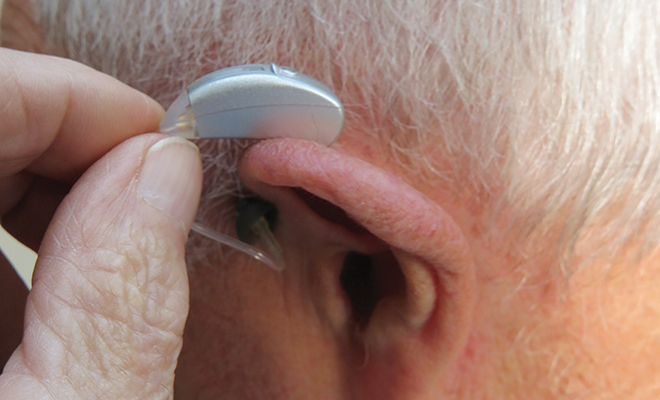
Dealing with Hearing Loss
Hearing loss is a serious issue for adults of all ages. In some ways, it is a far greater challenge for adults to lose their hearing than it is for children.
While children are still developing their identities, adults have become attached to who they are as a hearing person. When an adult suffers any loss of hearing, the result is similar to what one goes through after the loss of a loved one: denial, anger, depression and acceptance.
Roughly 20 percent of Americans, or 48 million people, report some degree of hearing loss. By age 65, one in three people will experience hearing loss. Of those with hearing limitations, 60 percent are either in the work force or in educational settings.
From an emotional perspective, hearing loss can cause the individual to undergo a change in personality. Isolation may ensue. It can become more challenging to enjoy conversation, as the individual is fearful about his or her ability to effectively communicate. Relationships can become strained; the individual’s social standing can be impacted, and the resulting stress can affect other areas of health. When a diagnosis of hearing loss is made, the thought of using a hearing aid device can result in loss of self-esteem. A once-friendly individual can become angry, grumpy and isolated.
One of my close family members has suffered from progressive hearing loss for nearly two decades, the result of using hunting rifles without ear protection early on, one too many rock concerts, and a predisposition to hereditary hearing loss. For years, he struggled to remain a part of conversation at work and at home. His inability to fully hear and comprehend everything around him led to disagreements, tension and frustration. He finally turned to an audiologist to test his hearing and to fit him with hearing aids. The result was practically a miracle!
“Before I got the hearing aids, I used to try to read lips, facial expressions and body language as a way to understand what someone might be saying,” he recalled. “It was extremely frustrating. I never felt as if I was fully a part of a conversation. Once I got my hearing aids, it was as if someone had turned on a light in a dark room.”
It is vitally important for family members and friends of someone suffering from hearing loss to remain patient, giving that person the time to adjust to this significant life change. Turning to support groups or professional counseling is an option. Seek medical treatment from an otolaryngologist; most specialists have audiologists on staff. Gone are the days of Great Aunt Sadie’s large, awkward and obvious hearing aids. Today’s technology has paved the way for discreet, technologically advanced devices that provide natural sound. With help, the person with hearing loss can resume a normal life and feel like his or her old self again.
As technology makes unprecedented leaps and bounds, one of the biggest game-changing devices right now is the hearing aid, which is changing the way people with hearing limitations live in the digital age. The new generation of hearing aids resembles something out of a spy movie rather than a doctor’s office.
Through the use of Bluetooth technology coupled with hearing aids, users can control their environment more readily. The volume and other settings on these aids can be controlled via mobile applications on a smartphone or tablet, or through a small wireless volume control that easily fits in a pocket or purse. With their ability to connect wirelessly with smartphones, they allow the person to hear a phone conversation directly through the hearing aid without the need to hold the phone to the ear. Instead of simply listening to music or watching television with headphones, individuals with Bluetooth-enabled hearing aids can pair their devices directly to a television or computer.
Additionally, some Bluetooth hearing aids readily partner with small, clip-on microphones. The person wearing the aid can simply ask the person with whom they are speaking to clip the microphone to his or her shirt, allowing that person’s voice to be wirelessly transmitted to the hearing aid. Some hearing aid manufacturers are also embedding microphones into devices that can be worn around the neck or placed on a flat surface, allowing for a hands-free conversation.
For those who want to feel like James Bond, the Roger™ Pen is making waves. This device looks like a pen and can be placed near a person who is speaking so that the individual with a compatible hearing aid can pick up voices without the need to ask the speaker to clip on a microphone.
While hearing loss can be devastating, we are fortunate to live in a time when technology makes it easier to maintain a normal lifestyle. If you believe you are experiencing any degree of hearing loss, consult a specialist. It will be a life-changing appointment. ■
Sources: hearingloss.org, lifestylehearingsolutions.com, livescience.com and phonak.com.







